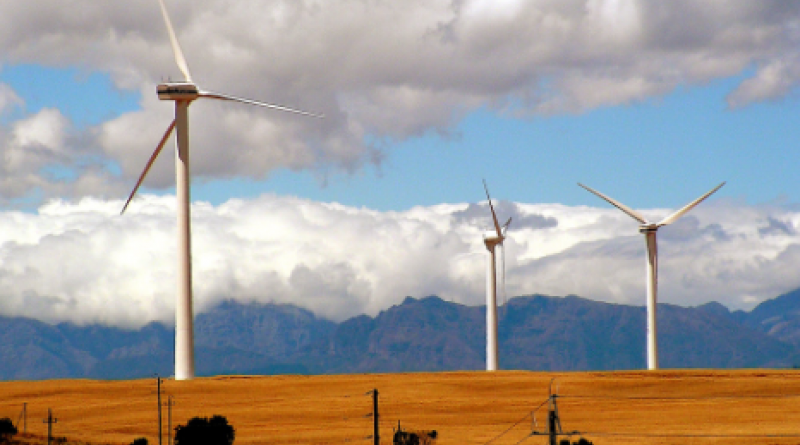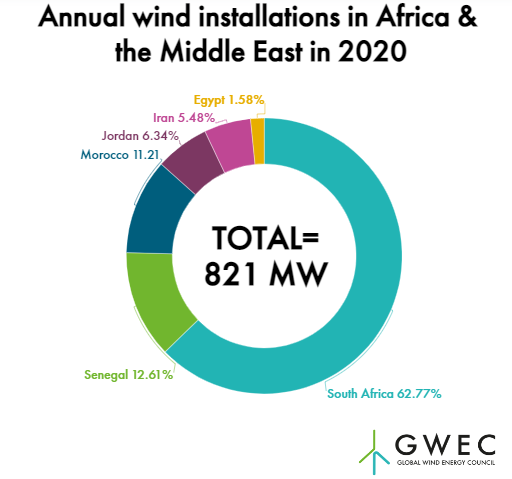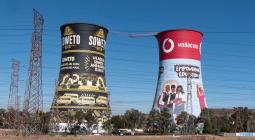Africa is only tapping into 0.01% of its wind power potential.

- In 2020, 821 MW of new wind power capacity was installed in Africa and the Middle East, bringing total capacity in the region to over 7 GW, which helps to avoid 10.7 million tonnes of CO2 emissions annually – equivalent to taking 2.3 million passenger cars off the road.
- The technical wind resource potential on the African continent alone is over 59,000 GW according to the latest wind resource data published in October 2020 by the World Bank’s International Finance Corporation, enough to power the continent’s energy demand 250 times over.
- South Africa installed 515 MW of new wind power capacity in 2020, making it the number one market for new annual installations last year as well as for cumulative installations.
- Tapping into the region’s wind power potential will be crucial to create greater energy security, reduce costs, and generate local socioeconomic benefits.
4 March 2021, Brussels – According to the latest data released by GWEC Market Intelligence, the Africa and Middle East region installed 821 MW of new wind power capacity in 2020, bringing total capacity in the region to over 7 GW. While this growth is stable for the region and nearly the same levels of the previous year despite COVID-19 impacting supply chains and project installation in key markets, wind power’s potential in the region is barely scratching the surface.
According to a report published by the IFC, the African continent alone has over 59,000 GW of technical wind resource potential – enough to power the continent’s energy demand 250 times over. Yet, current installed wind power capacity in Africa only accounts for 0.01 per cent of this potential.

The primary market driving growth in the region is South Africa, which installed 515 MW of new wind power capacity in 2020. Senegal came in second place for new capacity last year installing 103 MW, followed by Morocco (92 MW), Jordan (52 MW), Iran (45 MW), and Egypt (13 MW).
Overall, total wind power capacity in the region is now over 7 GW, which helps to avoid 10.7 million tonnes of CO2 emissions annually – equivalent to taking 2.3 million passenger cars off the road.
South Africa remains the number one wind power market in the region with 2.5 GW of cumulative wind power capacity installed in the country. The continued growth of the South African wind market is primarily due to the country’s Renewable Energy Independent Power Producer Procurement (REIPPP) program, which has provided a long-term project pipeline for the industry and attracted investors.
"Although we saw steady wind power growth in Africa and the Middle East in 2020, we are nowhere close to installing wind power capacity at the levels we could be, considering the massive resource potential in the region."




